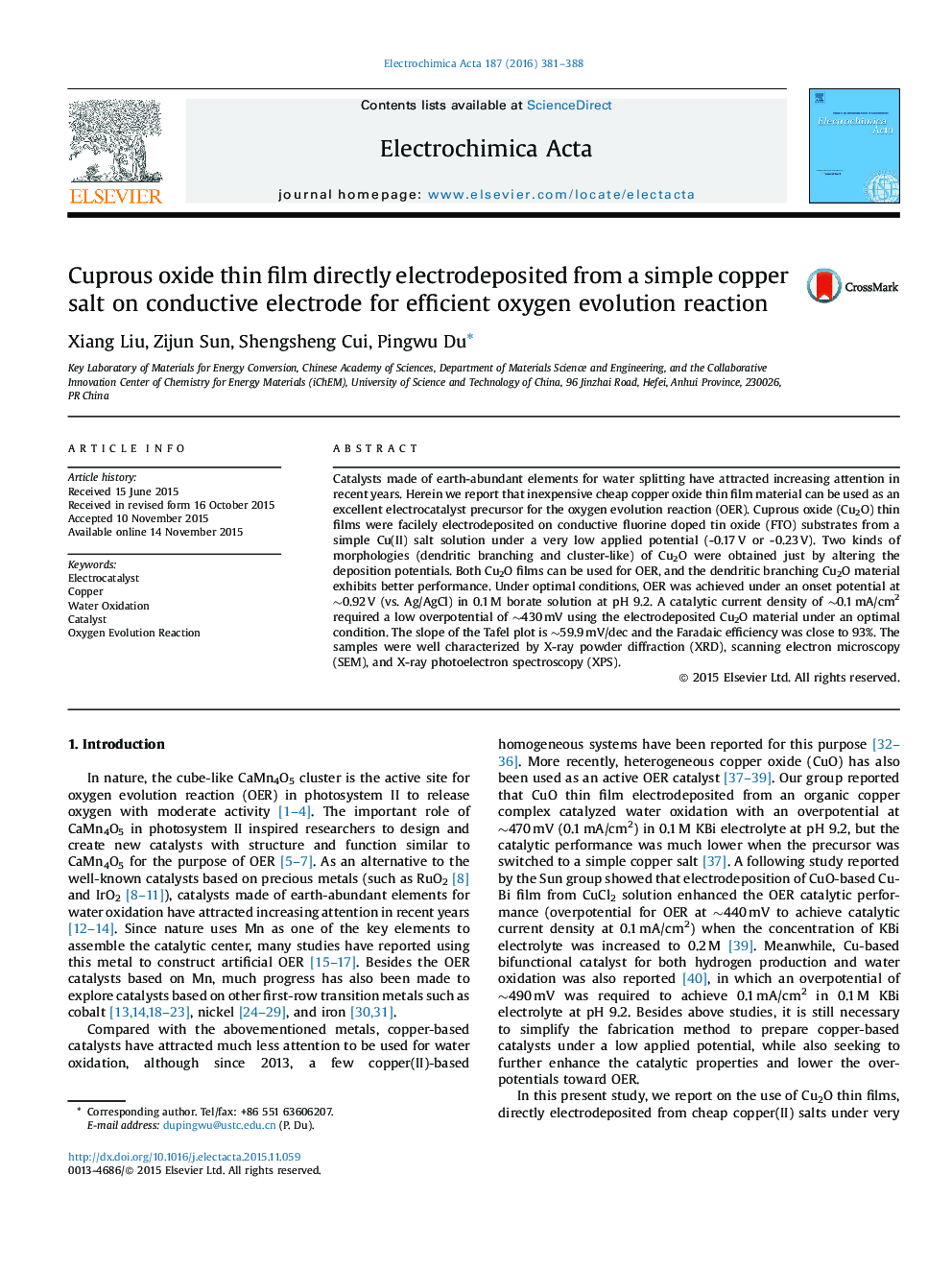| Article ID | Journal | Published Year | Pages | File Type |
|---|---|---|---|---|
| 183282 | Electrochimica Acta | 2016 | 8 Pages |
•Noble-metal-free copper-based thin films for electrocatalytic water oxidation.•Facile and direct electrodeposition of copper oxide thin films on conductive electrode.•The onset overpotential for water oxidation is low (η ∼330 mV).•The catalyst films show high Faradaic efficiency and low slope of the Tafel plot.•Inexpensive starting materials (a simple copper salt).
Catalysts made of earth-abundant elements for water splitting have attracted increasing attention in recent years. Herein we report that inexpensive cheap copper oxide thin film material can be used as an excellent electrocatalyst precursor for the oxygen evolution reaction (OER). Cuprous oxide (Cu2O) thin films were facilely electrodeposited on conductive fluorine doped tin oxide (FTO) substrates from a simple Cu(II) salt solution under a very low applied potential (-0.17 V or -0.23 V). Two kinds of morphologies (dendritic branching and cluster-like) of Cu2O were obtained just by altering the deposition potentials. Both Cu2O films can be used for OER, and the dendritic branching Cu2O material exhibits better performance. Under optimal conditions, OER was achieved under an onset potential at ∼0.92 V (vs. Ag/AgCl) in 0.1 M borate solution at pH 9.2. A catalytic current density of ∼0.1 mA/cm2 required a low overpotential of ∼430 mV using the electrodeposited Cu2O material under an optimal condition. The slope of the Tafel plot is ∼59.9 mV/dec and the Faradaic efficiency was close to 93%. The samples were well characterized by X-ray powder diffraction (XRD), scanning electron microscopy (SEM), and X-ray photoelectron spectroscopy (XPS).
Graphical abstractFigure optionsDownload full-size imageDownload as PowerPoint slide
